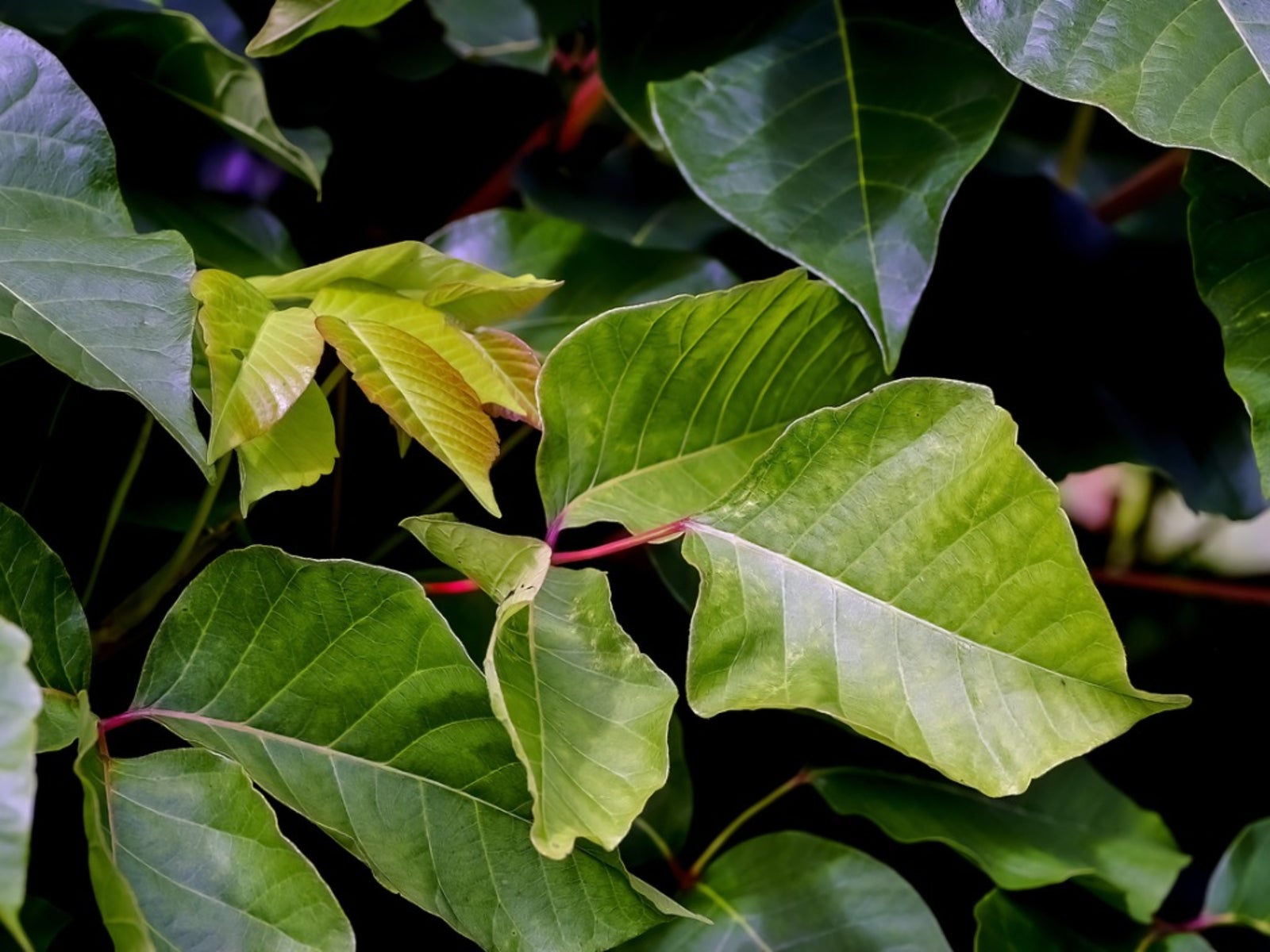Poison Sumac Information and Learn About Poison Sumac Control
What is poison sumac? Learn to identify and manage this invasive carefully and effectively.


Poison Sumac Information
What is poison sumac? This is an important question if you spend time in the great outdoors, and learning how to manage this nasty plant can save you hours of misery. Read on for more poison sumac information and learn how to get rid of poison sumac.
Poison sumac (Toxicodendron vernix) is a large shrub or small tree that reaches mature heights of up to 20 feet (6 m), but usually tops out at 5 or 6 feet (1.5-2 m). The stems are red and the leaves are arranged in 7 to 13 pairs of glossy green leaflets, often with pale green undersides.
Poison sumac trees grow in wet, swampy, or boggy areas or along shorelines. The plant is most common in the Great Lakes and coastal plains, but it is sometimes found as far west as Texas.
How to Get Rid of Poison Sumac
Although you can manage poison sumac any time of year, poison sumac control is most effective when the plant is in bloom in late spring through midsummer.
Cut the plants to a height of about 6 inches (15 cm). Use pruning shears, not a weed trimmer or mower, to avoid releasing irritating plant parts into the air.
Natural Poison Sumac Control
Natural poison sumac control is difficult but not impossible. You may be able control poison sumac by pulling or digging the plant, but be sure to get the entire root system or the plant will re-sprout.
You can also cut the plant to ground level with pruning shears, but you’ll need to repeat the task every two weeks or so to keep up with new growth. If you are persistent, the plant will eventually die, but it may take a couple of years.
Sign up for the Gardening Know How newsletter today and receive a free copy of our e-book "How to Grow Delicious Tomatoes".
Dispose of plant parts in plastic bags. Be sure to dress appropriately wearing gloves, long sturdy pants, and long-sleeved shirts. Here are some suggestions for safe removal of poison sumac.
Smother the plants with heavy black plastic or a tarp until they shrivel and die from the heat. You can also try using other materials such as carpeting, cardboard or a tarp. This process could take months, but may be worth your patience.
Cutting Sumac down over and over causes it to eventually starve for nutrients. This, too, could take many months and a lot of manual labor or be done more easily with heavy equipment.
Horticultural vinegar applied repeatedly can be effective.
All of these methods require caution and personal protection.
Note of Caution: Avoid burning poison sumac trees! Heating the plant releases vapors that can cause serious allergic reactions. When inhaled, the vapors can even be fatal.

A Credentialed Garden Writer, Mary H. Dyer was with Gardening Know How in the very beginning, publishing articles as early as 2007.